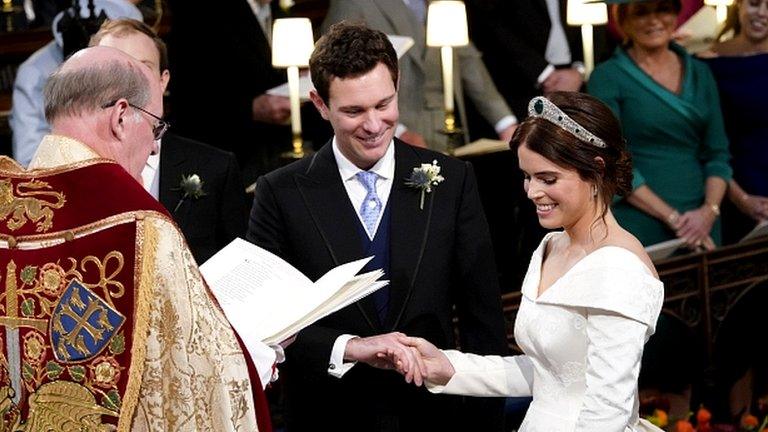Princess Eugenie: 'I wanted my wedding dress to show my scar'
- Published
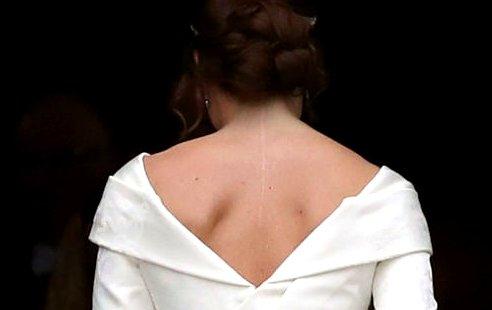
The Dress.
For many brides what to wear on their big day is one of the most important decisions they'll make.
Ivory or white? A-line or mermaid? Long or short? Fitted or puffy?
But for Princess Eugenie there was an extra factor at play.
The Queen's granddaughter had major surgery on her back to treat a curvature of the spine at the age of 12.
Sixteen years on, and the princess chose to wear a wedding dress that showed her scar, saying she hoped it would honour those who had helped her and inspire others with the condition of scoliosis.
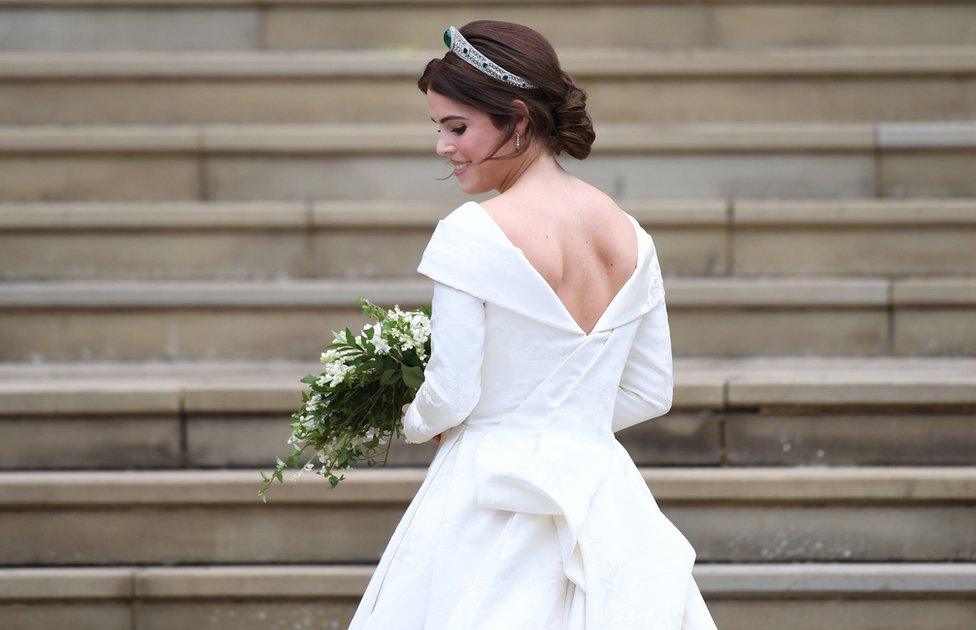
The dress was designed by British-based Peter Pilotto and Christopher De Vos
'I think you can change the way beauty is'
Ahead of the wedding, the princess spoke of the importance of showing "people your scars".
And earlier this year she revealed for the first time her own X-rays from when she was treated for scoliosis as a child.
Allow Instagram content?
This article contains content provided by Instagram. We ask for your permission before anything is loaded, as they may be using cookies and other technologies. You may want to read Meta’s Instagram cookie policy, external and privacy policy, external before accepting. To view this content choose ‘accept and continue’.

"I had an operation when I was 12 on my back, and you'll see on Friday [at the wedding], but it's a lovely way to honour the people who looked after me and a way of standing up for young people who also go through this," she told ITV's This Morning.
"I think you can change the way beauty is, and you can show people your scars and I think it's really special to stand up for that."
What is scoliosis and why does it mostly affect young girls?
Scoliosis is a condition that causes the spine to bend to one side,, external making the back appear rounded and shoulder blades stick out.
It most often starts in children aged 10 to 15 but there is often no known cause. Sometimes it is caused by the bones not forming properly in the womb or other medical conditions, including cerebral palsy.
Three to four children in 1,000 need treatment from a specialist.
The Scoliosis Association UK says about five out of six people with adolescent idiopathic scoliosis are female - but it is not known why.
Allow YouTube content?
This article contains content provided by Google YouTube. We ask for your permission before anything is loaded, as they may be using cookies and other technologies. You may want to read Google’s cookie policy, external and privacy policy, external before accepting. To view this content choose ‘accept and continue’.
In Princess Eugenie's case, it required corrective surgery and she had the operation at the Royal National Orthopaedic Hospital.
The princess, now 28, has previously spoken of how she felt in the weeks before her surgery, saying it was "a scary prospect for a 12-year-old; I can still vividly remember how nervous I felt".
"During my operation, which took eight hours, my surgeons inserted eight-inch titanium rods into each side of my spine and one-and-a-half inch screws at the top of my neck. After three days in intensive care, I spent a week on a ward and six days in a wheelchair, but I was walking again after that," she says in her story on the Royal National Orthopaedic Hospital's website., external
'I thought I'd be in a wheelchair by 30'
Trainee teacher Camilla Seckin also had surgery for the condition at the same hospital.
"I was really terrified and really in denial about having the surgery, but I knew it was something that I had to get done.
"At this point my back was at a 72-degree curvature and the prognosis was that I'd be in a wheel chair by the age of 30.
"I felt very insecure about my appearance but I feel confident now and I'm not ashamed of having the condition."
Camilla encourages sufferers to speak up "as it can be quite lonely if you don't".
"Building a network with people who have had the surgery has really helped me. I can still do things despite my condition."
'Eugenie can inspire others who are affected'
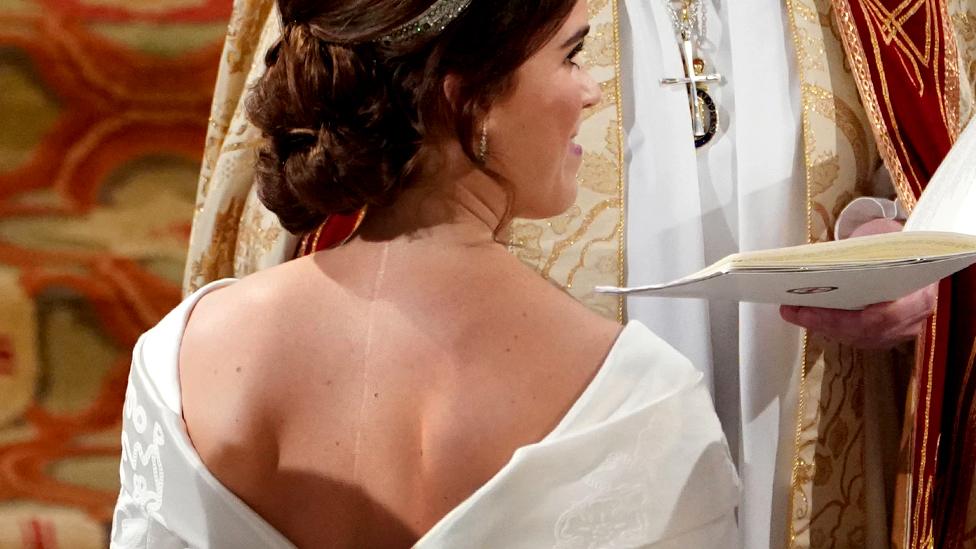
Jan Lehovsky, a spinal surgeon who was part of the team who operated on the princess, said: "Most of the patients affected by scoliosis are young girls and she's a real role model for them.
"She's someone who can inspire them, which is so important for the young ladies coming through the surgery."
- Published12 October 2018
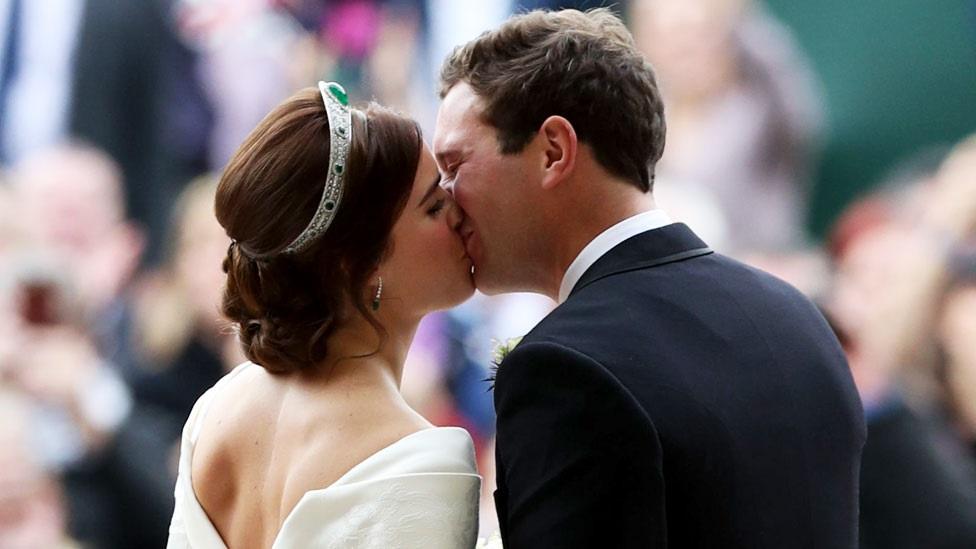
- Published12 October 2018
